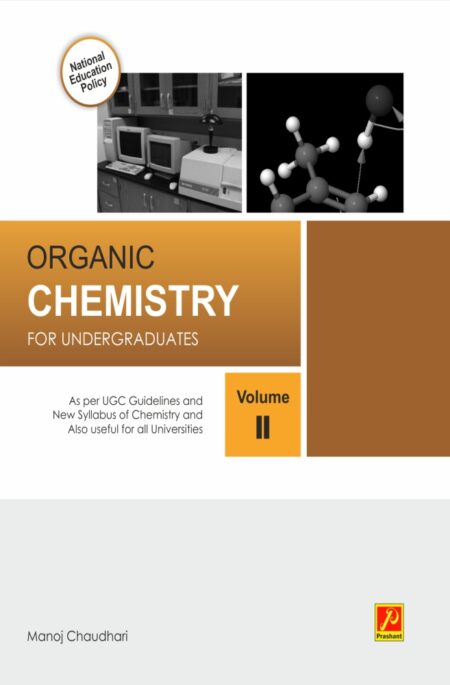CH-102 | Organic and Inorganic Chemistry
F.Y.B.Sc. | Sem I | Chemistry
Authors:
ISBN:
₹90.00
- DESCRIPTION
- INDEX
F.Y.B.Sc. | Sem I | CH-102
CHEMISTRY
Organic and Inorganic Chemistry
We are very glad to present this book on “Organic and Inorganic Chemistry’’ in the hands of F.Y.B.Sc. students and teachers. The book is strictly written according to the CBCS pattern syllabus framed by the board of studies in Chemistry, KBC NMU Jalgaon, for F.Y.B.Sc to be implemented from August 2022 and is written in very simple language giving exhaustive details. Questions of various types are included at the end of each chapter. This will help in generating interest and thorough understanding of the subject. We hope, this book will be useful for students and teachers.
1. Basic Principles of Organic Chemistry :
1.1 Introduction to organic chemistry
1.2 General properties of organic compounds
1.3 Applications of organic compounds in everyday life
1.4 Covalent bonds
1.5 Double and Triple Bonds
1.6 Structural formulae of organic compounds
1.7 Structure of Benzene
1.8 Huckel’s Rule
1.9 Nomenclature of benzene derivatives
1.10 Structural effects
1.11 Structural Effects and strength of acids and bases
1.12 Fundamentals of organic reaction mechanism
1.13 Isomerism
1.14 Purification of organic compounds
1.15 Solvents
2. Hydrocarbons :
2.1 Introduction
2.2 Alkanes
2.3 SP3 Hybridization (Formation of ethane molecule)
2.4 Nomenclature of alkanes
2.5 Isomerism in alkanes
2.6 Preparation of Alkanes
2.7 Reactions of alkanes
2.8 Alkenes
2.9 SP2 Hybridization (Formation of Ethylene molecule)
2.10 Nomenclature of alkenes
2.11 Geometrical Isomerism in alkenes
2.12 Preparation of Alkenes
2.13 Reactions of Alkenes
2.14 Alkynes
2.15 SP hybridization (Formation of acetylene molecule)
2.16 Nomenclature of alkynes
2.17 Acidity of acetylene and terminal alkynes
2.18 Preparation of Alkynes
2.19 Reaction of Alkynes
3. Hybridization and shapes of covalent molecules :
3.1 Hybridization
3.2 Types of Hybridization involving s, p and d orbital and Application of hybridization concept
3.3 Valence shell electron pair repulsion (VSEPR) theory
3.4 Applications of VSEPR theory to explain geometry of molecules containing lone pairs as well as bond pairs of electrons






